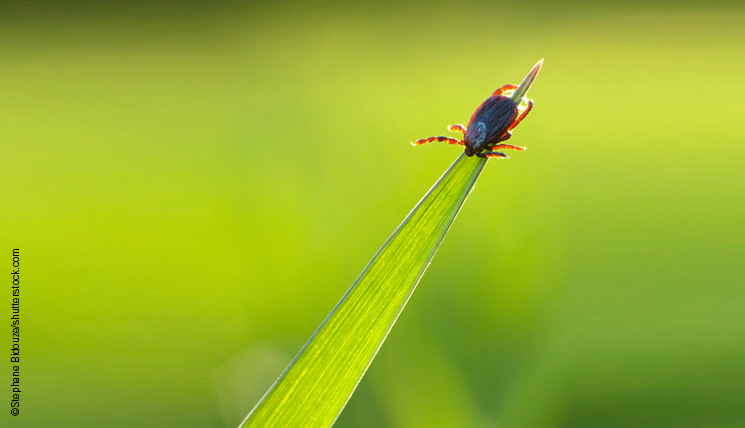A few days ago, Prof Dr Ute Mackenstedt from the University of Hohenheim, an expert in the research of ticks, together with Dr Gerhard Dobler from the reference laboratory for tick-borne encephalitis (TBE) and Dr Rainer Oehme from the Baden-Württemberg Health Authority, reported on two novel ways by which TBE viruses can be transmitted to humans: raw milk and the tick species Dermacentor reticulatus.
TBE virus infected Dermacentor ticks
Until now, only ticks of the genus Ixodes were known to transmit the virus. The most prominent transmitting species is the black-legged or deer tick, which also attacks humans. According to Dr Dobler, researchers found the first infected Dermacentor in 2016 and 2017 at a measuring site close to Leipzig in Saxony. This species is active at lower temperatures than the deer tick, but prefers animal rather than human hosts.
Contaminated raw milk products
Additionally, the first two German cases of TBE-virus transmission via the consumption of contaminated raw milk products were detected in summer 2016. This transmission path had already been known in Eastern Europa, where such cases had been found regularly; however, there had been no cases in Germany yet. A family had consumed raw milk products when visiting a goat farm. The two male family members got infected with TBE virus. The importance of these cases for science is that, for the first time, the complete way of transmission – from the vector (tick) via the host animal (goat) and raw milk products to the infected individual – can be retraced and analysed.
Infectious diseases transmitted by ticks in Germany
In Germany, mainly the south is affected by TBE infections. For some years, however, the case numbers have been increasing in central and northern Germany. Mild temperatures in winter and spring enable the ticks to spread and to become active earlier in the year. Consequently, infectious diseases transmitted by ticks to humans, such as Lyme disease and TBE, are spreading likewise.
While the only preventive measure against Lyme disease is the prevention of tick bites, there exists a vaccine against TBE. According to Dr Dobler, this vaccination fortunately also protects against infection via raw milk and Dermacentor.
